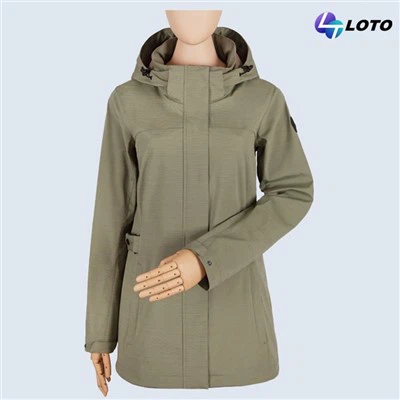A shell jacket, often regarded as an essential piece of outdoor apparel, is designed to provide protection against the elements without the bulk of insulation. This type of jacket is particularly favored by enthusiasts of outdoor activities such as hiking, skiing, and mountaineering. In this article, we will explore the features, benefits, and versatility of shell jackets.
Understanding Shell Jackets
What Is a Shell Jacket? A shell jacket is a lightweight, often waterproof and windproof outer layer. It serves as the first line of defense against rain, snow, and wind, while allowing for a high degree of breathability. Unlike insulated jackets, shell jackets do not have built-in padding or insulation. This makes them highly adaptable, as they can be layered over other clothing depending on the weather conditions and personal preference.
Key Features
Waterproofing: Most shell jackets are treated with a durable water repellent (DWR) coating to keep moisture out.
Breathability: They are designed to allow moisture vapor to escape, preventing overheating during strenuous activities.
Lightweight and Packable: Shell jackets are typically lightweight and can be easily packed, making them ideal for travelers and adventurers.
Durability: Constructed with robust materials, these jackets are designed to withstand harsh outdoor conditions.
Types of Shell Jackets
1. Hardshell Jackets: These are the most durable and offer the highest level of protection against extreme weather. They are ideal for activities like alpine climbing and backcountry skiing.
2. Softshell Jackets: Softshells are more flexible and breathable than hardshells, making them suitable for aerobic activities like hiking and running in milder conditions.
3. Hybrid Jackets: Combining features of both hardshell and softshell jackets, hybrids offer a balance between weather protection and breathability.
Choosing the Right Shell Jacket
Activity-Specific Features: Consider the specific features needed for your activity, such as underarm zips for ventilation, adjustable hoods, or reinforced areas for durability.
Fit and Comfort: A good shell jacket should allow for full range of motion and be comfortable over layers.
Sustainability: Many brands now offer eco-friendly options, using recycled materials and sustainable practices.
Care and Maintenance
To maintain the performance of a shell jacket, regular cleaning and reapplication of DWR coating are recommended. Follow the manufacturer's instructions for the best results.
Conclusion
A shell jacket is a versatile and essential piece of outdoor gear, offering protection against the elements while being lightweight and breathable. Whether you are an avid mountaineer or a casual hiker, investing in a quality shell jacket can enhance your outdoor experience. Remember to consider your specific needs and the conditions you'll be facing when choosing the perfect shell jacket for your adventures.









